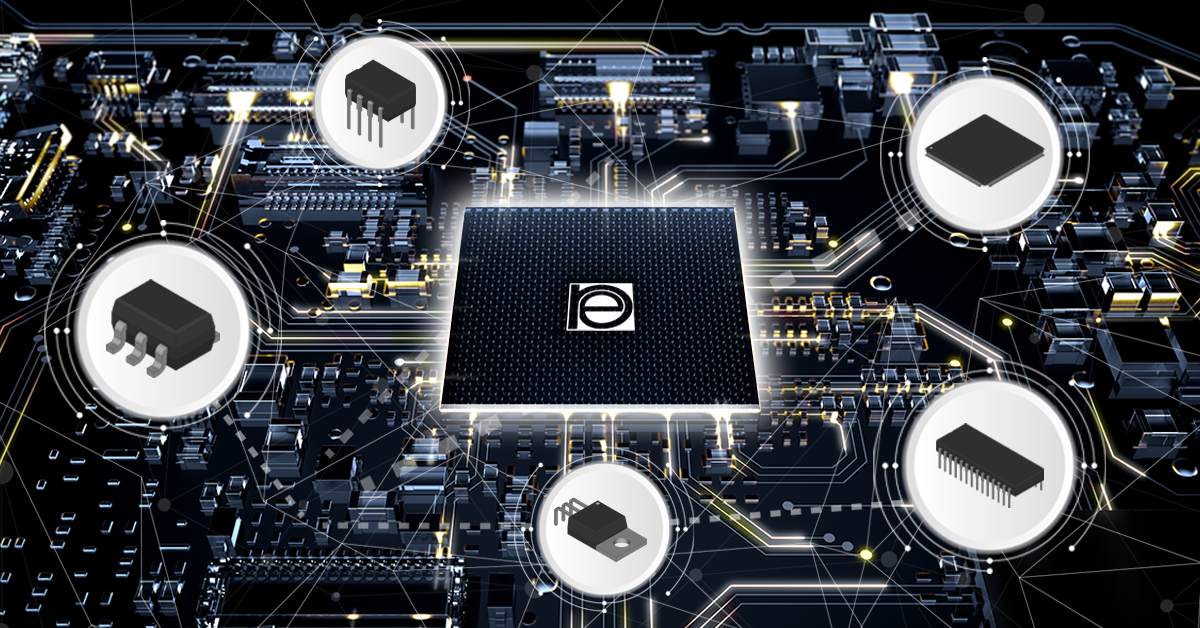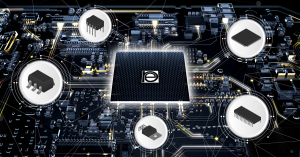
The diverse challenges facing 5 distinct product segments.
For example, finding a solution for the main microprocessor won’t matter if there isn’t a solution for associated memory devices, or if stand-alone interface devices are no longer available due to newer processors having integrated the technology. Similar challenges exist throughout designs, including standard areas, such as analog, power, and timing. This can be even more challenging with application-specific peripherals, like highspeed networking, RF/wireless, and the many parallel and serial interface standards that exist.
Working with our suppliers and customers, and staying abreast of industry changes, Rochester continuously evaluates inventory to provide the best possible coverage for products with long lifecycle applications. These include finished goods inventory of active and obsolete lifecycle devices, and investment in wafer and die stock. Additionally, Rochester invests in test capabilities for continued manufacturing, and in die recreation for devices where the original die source is no longer available.
For finished goods inventory, Rochester has over 10 billion units, covering 200,000-part number options. Product type and classification vary throughout the industry, but Rochester has grouped its inventory into 5 main categories: Analog and Mixed Signal, Processors and Peripherals, Logic Devices, Memory, and Discrete. Each group faces its own challenges, regarding the likelihood of obsolescence and the availability of compatible replacements.
The Analog and Mixed Signal group covers product types, that include power management, data converters, amplifiers, interface, audio-video, sensors, and RF-Microwave. For many devices in this group, there are multi-source and potential alternative options, depending on the original design. However, many proprietary high-performance and specialty analog devices cannot be easily replaced and need to be monitored during their lifecycles.
Learn more about our Analog and Mixed Signal Portfolio
The Processors and Peripherals group are typically considered critical parts. Solutions cover 4-bit to 64-bit microprocessors and microcontrollers, that may use multi-sourced or proprietary architectures, and cover multiple product generations. There is also the added complexity of considering utilized software and tool chains.
Search our Processor and Peripheral Product Portfolio
Products in the Logic group have evolved through the product generations resulting from technology advancements and supplier consolidations. Fortunately, compatibility exists across some product families. However, the more complex and higher density products have less compatibility and support for legacy voltage rails such as 5V and older package styles present definite challenges.
Learn more about our Logic Products
The Memory group benefits from a strong customer preference for using multi-sourced solutions. The challenge is due to a push to create faster, denser, and lower power memories, to keep pace with product advancements. As suppliers move to more modern memories, legacy options become limited, requiring consideration for alternatives. Alternatives, however, may differ in performance, density, temperature rating, and even package and power supply differences, all traits that may need to be considered. Also, existing proprietary specialty memories may have a limited number of sources. Once these drop out of the mainstream market it becomes critical to monitor what remains available in the marketplace.
Discover our Memory Devices
Lastly, the Discrete group is the largest segment by volume. The general perception that there is relative “lifecycle safety” for discrete semiconductors, holds some truth, due to the amount of multi-sourcing and package compatibility, but it can never be held as a certainty. Like other semiconductors, there are constant advancements in improving efficiency and cost reduction. More recently, Silicon Carbide and Gallium Nitride technologies have gained traction in newer designs and may become a disruptive force to their Silicon counterparts down the road.
Explore our Discrete Product Portfolio
When confronted with the challenge of obsolescence, design requirements usually extend across various products. Rochester’s extensive finished goods inventory, licensed manufacturing solutions, and die recreation provide the widest possible coverage for critical long-lifecycle applications. No matter the product segment, Rochester is committed to supporting your needs.
Do you want to learn more about planning for obsolescence challenges?
6 Steps of Successfully Planning for and Avoiding the Costs of Obsolescence
The Proactive Approach to Obsolescence
Find out more : www.rocelec.com









